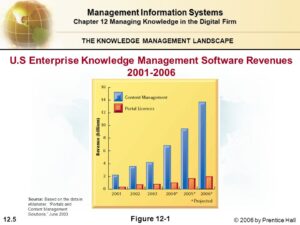How to Integrate an Enterprise Knowledge and Content Management Solution With a Knowledge Management System
Enterprise Knowledge and Content Management Solution
Traditionally, enterprise knowledge and content management has focused on content in databases. However, this practice is increasingly expanding to include other types of information, such as tacit and employee knowledge. Moreover, the term includes more than just information stored in databases. It also covers the capture and management of content, from tacit to explicit, from unstructured to structured, and from decentralized to centralized. Additionally, the process of managing content entails defining the format, style, and architecture of the information as well as appropriate controls and workflows.
An effective enterprise knowledge management solution must ensure that employees have access to the right information. For example, a company can designate different employees to manage specific areas, such as customer service. Permission schemes should be flexible, as modern knowledge bases enable dynamic permissions. Another important aspect of enterprise knowledge management is the enforcement of a review and categorization cycle for organization-wide documentation. This helps ensure that the correct information is shared with the right people and not misinterpreted or spread to multiple locations.
The structure of a knowledge management system depends on the type of customer support that the company provides. Depending on the type of content, it may include FAQ feature, user forum, instructional videos, and more. In addition, it could incorporate advanced customer education training, such as Google Analytics and Optimizely. These tools will provide quick answers to common questions and improve collaboration. But if you want to make your knowledge management system more effective, you must integrate it with the knowledge management system.

How to Integrate an Enterprise Knowledge and Content Management Solution With a Knowledge Management System
Enterprise Knowledge and Content Management is essential for any modern organization. Its benefits go beyond data quality. With proper metadata, knowledge can be used for analytics and business improvement. For example, it can be used as a source for training and education. And it can also be integrated with a company’s knowledge management system. It can also help with the management of content, including customer reviews and testimonials. You can even use it to improve collaboration within an organization.
A good knowledge management system must contain a variety of media for the employees to find the most relevant information. It should have a FAQ feature, user forum, instructional videos, and other forms of media for customer education. It should be available throughout the organization. Furthermore, a quality knowledge management system should be available on a company-wide basis. These systems will help the company to serve customers better. Once implemented, they will increase productivity and improve the quality of their business.
While an enterprise knowledge management system needs to be available throughout the company, it can help a business make the most of its IP. A quality knowledge management system should allow employees to contribute to content without the need for additional infrastructure. This will also make it easier for the organization to share information. Ultimately, an enterprise knowledge management system should help organizations develop and improve their products and services. Its users should be able to contribute to their own work while collaborating with other members.